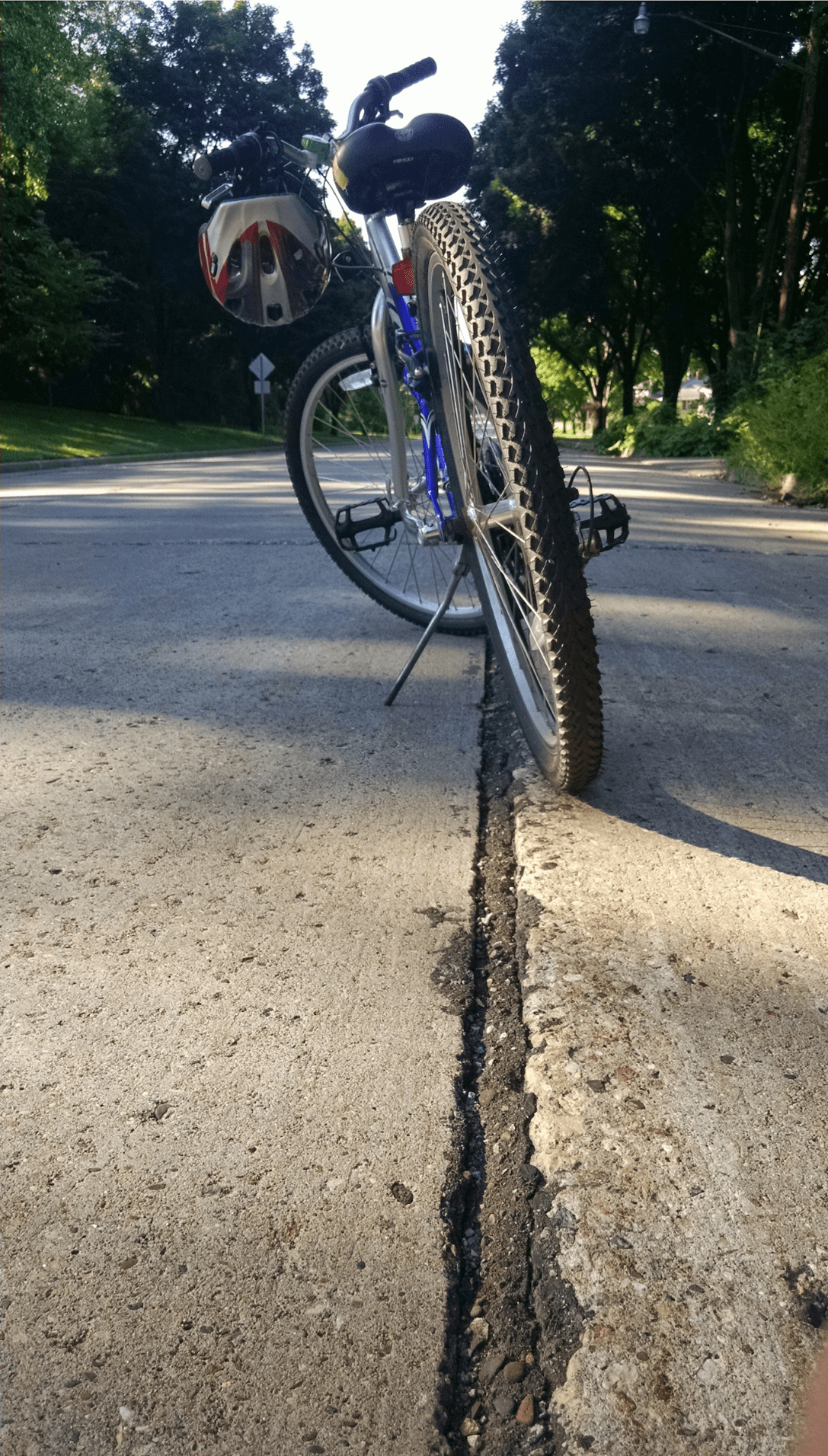Over the past couple of months, we've been following a story in Savannah about a crackdown on jaywalking -- a crackdown prompted by the death of a tourist who was hit by a car on Oglethorpe Avenue in the city's historic district. Streetsblog Network member Sustainable Savannah has done a great job of articulating why the jaywalking ticket blitz was an inappropriate and ineffective response to the problem of unsafe streets.
Today, the blog makes the connection between law enforcement's "windshield perspective," as evidenced by the bias against pedestrians in this case, and public health -- specifically, the nation's weight problem:
Anybody going to give this guy a ticket?
[I]n the Savannah Morning News’ Vox Populi comment section, …a reader reported being "so tired of rude, arrogant and selfish pedestrians deliberately stepping in front of my vehicle." Another claimed the presence of pedestrians made Oglethorpe Avenue "one of the scarier streets in Savannah to drive down” and complained about the indignity of having to "drive below the speed limit."…
[T]he sense of entitlement held by these drivers has no doubt been reinforced by the jaywalking crackdown. At the same time, motorists are free to impede pedestrian traffic -- not for just moments — but hours or days at a time without fear of police intervention. On Saturday I made the 2.5 mile trip from my home to my office and counted five cars parked on or otherwise blocking sidewalks or crosswalks along the way.
While having to walk around a car parked on a sidewalk or in a crosswalk may be a minor inconvenience for pedestrians (perhaps on par with a motorist having to tap the brakes to allow a pedestrian to cross the street) for citizens with mobility or visual impairments, it’s a different story. Motorists create dangerous situations and impassible obstacles when they choose to park where people need to walk.
A TIME magazine story from this week entitled "Why are Southerners so Fat?" acknowledges the role of deep-fried diets, but also points to physical inactivity, due to poor infrastructure, as a cause. The story’s author notes that many Southern states have "a surprising lack of sidewalks" and this discourages "even the most eager pedestrians." Add insufficient or nonexistent public transportation and the result is "for most people, the best way to get around is by car."
Here in Savannah (or at least the parts of town developed before World War II) we are lucky to have plenty of sidewalks. Still, by vilifying pedestrians and failing to hold motorists accountable, we
have come up with new ways to discourage "even the most eager pedestrians." Continuing down this road could bring serious public safety and public health consequences. At the very least, it will
convince people that "the best way to get around is by car," even when it isn’t.
Also today around the network: The National Journal's Expert Blog on transportation asks, "How Do We Modernize Transportation for an Unknown Future?" Comments there are limited to the aforementioned experts; you can leave your own ideas in the comments here. The Transport Politic rounds up the current contenders for high-speed rail funds. And The Sustainable Cities Blog looks at bus rapid transit.





